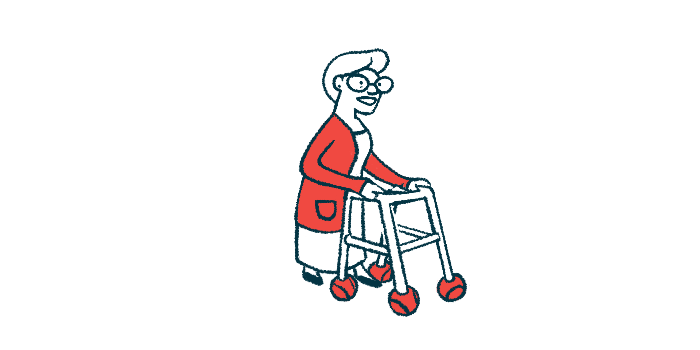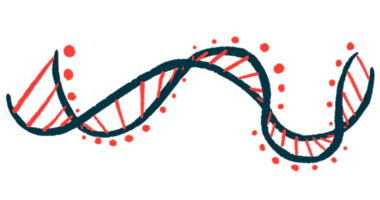Elderly MG patients at high risk of treatment side effects
Physicians should adjust care accordingly, new study says

Elderly people with myasthenia gravis (MG) are at higher risk of experiencing side effects related to disease treatments, which can be fatal for patients in some cases, a new study found.
In fact, treatment-related adverse effects were seen among more than 40% of patients in the study — all of whom had MG onset after age 70. In 14% of cases, such side effects were severe, and included “fatal immunosuppressant-related infections,” according to researchers.
“Physicians should be aware of the increased risk of [treatment-related] complications in elderly patients with MG and adapt treatment accordingly,” the team wrote.
These findings were reported in a study, “Myasthenia gravis treatment in the elderly presents with a significant iatrogenic risk: a multicentric retrospective study,” published in the Journal of Neurology.
Numbers of elderly MG patients expected to rise as population ages
MG is caused by an autoimmune attack that interferes with the communication between nerve and muscle cells, resulting in symptoms like muscle weakness and fatigue. This autoimmune attack is most commonly driven by antibodies against the acetylcholine receptor (AChR), a protein that plays a key role in nerve-muscle communication.
There are several medications available to treat MG. Most of them work by suppressing the immune system to dampen the autoimmune attack that drives the disease. These treatments can be effective for controlling MG symptoms, but as with any medications, they also can lead to side effects.
In particular, given that most MG therapies are designed to reduce immune function, these therapies commonly increase the risk of infections.
Most people with MG are diagnosed in early adulthood, and the safety of MG treatments is generally based on data collected from patients in this age group. But MG also can develop in elderly patients, who may be at an increased risk of experiencing some side effects and problems related to treatments.
In this study, a team led by scientists in France reviewed clinical data for people who developed MG in their latter decades of life. One of the team’s main goals was to assess the safety of MG treatments in this patient population.
“As population in western countries is ageing, the number of elderly MG patients will likely increase,” the team wrote.
“Our aim was to evaluate a large group of elderly MG patients … to describe their characteristics, and assess the [treatment-related] burden associated with MG treatment,” they wrote.
The analysis included data on 138 people with MG who started experiencing the first symptoms of the rare disorder between the ages of 70 and 93; the patients were followed for a mean of 4.5 years.
Most patients (87%) were positive for antibodies against AChR. About two-thirds (63%) had generalized MG, which can affect varying muscles in the body. The rest (37%) had ocular MG, with symptoms only affecting the eye. Such symptoms typically include double vision and drooping in one or both eyelids.
The muscle-strengthening medication pyridostigmine (sold under the brand name Mestinon) served as the initial treatment for most patients. Immune-suppressing therapies or corticosteroids were given afterward as needed.
Measures of disease severity showed the treatments worked — most patients (76%) reported less severe disease after starting on medication. Slightly more than half had no or minimal symptoms at the most recent clinical visit. However, patients who were older when they started treatment were less likely to experience a reduction in disease severity.
Clinically significant medication side effects were reported in almost half (41%) of the patients, with 14% of the reported side effects being considered severe. Side effects were most common with the immune-suppressing therapies rituximab and azathioprine; most patients given these medicines reported some side effects, and half of the side effects associated with rituximab were judged to be severe.
Fewer side effects seen in elderly patients treated with corticosteroids
Among the most commonly reported side effects among these older patients were diarrhea or cramps with pyridostigmine, and blood or liver test abnormalities with azathioprine.
“We observed a large proportion of [side effects] in our population of elderly MG,” the researchers wrote, adding that these rates may be underestimations given that very mild side effects might go undocumented in medical records.
Side effects were significantly more common in patients who were positive for anti-AChR antibodies compared with those who were negative for these antibodies (47% vs. 11%). Patients negative for anti-AChR tended to receive fewer lines of treatment, the researchers noted..
Individuals given corticosteroids or mycophenolate mofetil (sold under the brand name CellCept) reported the lowest rates of side effects, suggesting that these therapies “have the best safety profile for treating MG in the elderly.”
In our study, [side-effect]-related deaths (3 patients) were nearly as frequent as the MG-related deaths related to worsening of MG symptoms (4 patients).
A total of 16 deaths were reported during the studied period. Most of them were not related to MG nor to MG treatments, and were caused instead by cancer, heart attack, or head injury. Four deaths were due to MG-related respiratory failure.
Another three deaths were attributed to side effects of treatment. In all three cases, patients receiving immune-suppressing medications for MG developed fatal infections.
“In our study, [side-effect]-related deaths (3 patients) were nearly as frequent as the MG-related deaths related to worsening of MG symptoms (4 patients),” the researchers wrote.
Collectively, these findings highlight a high risk of side effects in elderly people with MG, which clinicians should take into account when making recommendations about treatment, the team noted.
The analysis was limited by its retrospective nature, the team noted, and it did not include data on some MG treatments that were only approved in the last few years, such as Rystiggo (rozanolixizumab) and Vyvgart (efgartigimod). Its advantages, conversely, included the use of real-life data in its analyses.








